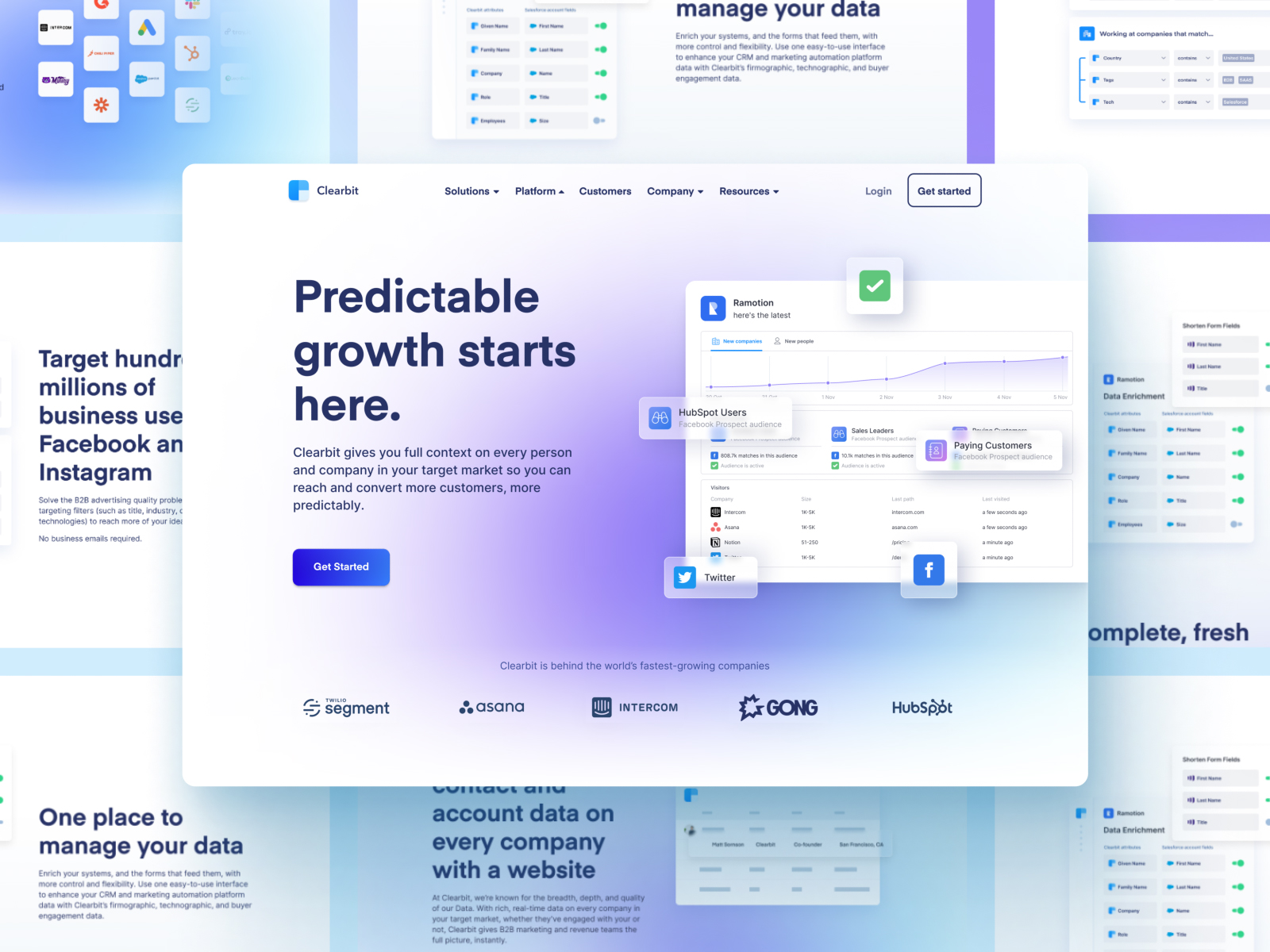Exactly how to Enhance Your Website's Efficiency with Advanced Web Design Approaches
Exactly how to Enhance Your Website's Efficiency with Advanced Web Design Approaches
Blog Article
An In-depth Overview of the most effective Practices in Internet Layout for Developing Accessible and intuitive Online Systems
The effectiveness of an online system hinges significantly on its design, which should not just attract customers but additionally assist them seamlessly with their experience. Finest techniques in web style incorporate a series of strategies, from responsive formats to obtainable navigation frameworks, all intended at cultivating instinctive interactions. Comprehending these principles is important for designers and designers alike, as they directly impact customer satisfaction and retention. Nevertheless, the ins and outs of each method often expose much deeper effects that can transform a fundamental interface right into an extraordinary one. What are the crucial elements that can elevate your system to this degree?
Recognizing Individual Experience
Recognizing individual experience (UX) is crucial in internet style, as it straight influences just how visitors connect with a website. A properly designed UX makes sure that individuals can browse a website without effort, access the information they seek, and total desired actions, such as authorizing or making an acquisition up for a newsletter.
Usability concentrates on the ease with which customers can accomplish tasks on the internet site. Availability ensures that all customers, consisting of those with specials needs, can communicate with the site successfully.
Aesthetic appeals play a crucial function in UX, as aesthetically appealing layouts can enhance individual fulfillment and interaction. Shade systems, typography, and images needs to be attentively chosen to produce a cohesive brand identification while additionally facilitating readability and comprehension.
Inevitably, prioritizing user experience in web design fosters better customer contentment, encourages repeat gos to, and can dramatically enhance conversion rates, making it an essential element of effective digital techniques.
Importance of Responsive Style
Receptive style is an essential part of modern-day web growth, guaranteeing that internet sites provide an optimum viewing experience throughout a broad variety of gadgets, from desktop computers to smartphones. As customer habits significantly moves in the direction of mobile surfing, the need for internet sites to adapt seamlessly to different display sizes has become critical - web design. This flexibility not just boosts functionality however likewise considerably effects customer interaction and retention
A responsive style employs liquid grids, adaptable images, and media questions, permitting for a natural experience that maintains performance and aesthetic stability regardless of tool. This technique gets rid of the need for users to focus or scroll horizontally, leading to a much more user-friendly interaction with the content.
Furthermore, online search engine, significantly Google, prioritize mobile-friendly websites in their rankings, making responsive style essential for keeping visibility and access. By embracing responsive layout concepts, businesses can reach a more comprehensive audience and boost conversion prices, as users are most likely to involve with a website that offers a smooth and consistent experience. Ultimately, responsive layout is not merely a visual choice; it is a strategic requirement that mirrors a commitment to user-centered style in today's digital landscape.
Simplifying Navigating Frameworks

Utilizing a hierarchical structure can significantly boost navigation; key categories ought get more to be conveniently obtainable, while subcategories need to practically adhere to. Consideration of a "three-click policy," where users can get to any kind of page within 3 clicks, is advantageous in keeping navigation intuitive.
Integrating a search feature further improves usability, permitting individuals to find content directly. web design. Furthermore, carrying out breadcrumb trails can offer individuals with context regarding their area within the website, advertising ease of navigating
Mobile optimization is an additional essential element; navigating ought to be touch-friendly, with clearly defined links and buttons to suit smaller sized displays. By reducing the variety of clicks needed to accessibility content and making sure that navigating corresponds across all web pages, designers can produce a smooth customer experience that urges exploration and reduces disappointment.
Prioritizing Availability Specifications
About 15% of the worldwide population experiences some form of handicap, making it vital for web developers to focus on accessibility criteria in their projects. Ease of access includes numerous facets, including visual, auditory, cognitive, and electric motor problems. By adhering to developed standards, such as the Internet Material Availability Guidelines (WCAG), developers can develop comprehensive electronic experiences that deal with all individuals.
One essential technique is to make certain that all web content is perceivable. This consists of supplying alternate text for photos and guaranteeing that video clips have inscriptions or transcripts. Additionally, keyboard navigability is crucial, as many customers count on key-board faster ways as opposed to mouse interactions.
In addition, shade contrast need to be thoroughly taken into consideration to fit people with aesthetic disabilities, making certain that message is clear versus its background. When designing forms, tags and error messages need to be descriptive and clear to help customers in completing jobs effectively.
Finally, carrying out use testing with individuals that have handicaps can give important insights. By prioritizing accessibility, web developers not just abide by legal standards yet also broaden their audience reach, promoting a more inclusive on-line atmosphere. This commitment to accessibility is important for a easy to use and genuinely accessible internet experience.
Utilizing Aesthetic Hierarchy
Quality in style is paramount, and using aesthetic power structure plays a site link critical duty in accomplishing it. Visual hierarchy describes the plan and presentation of elements in such a way that clearly shows their relevance and guides user interest. By tactically utilizing dimension, comparison, color, and spacing, designers can create a natural circulation that guides customers via the content seamlessly.
Making use of bigger fonts for headings and smaller sized ones for body message establishes a clear distinction between areas. Additionally, employing strong shades or contrasting backgrounds can accentuate essential info, such as call-to-action switches. White room is just as necessary; it assists to prevent mess and enables customers to focus on the most crucial components, enhancing readability and overall customer experience.
Another key facet of aesthetic power structure is making use of imagery. Relevant photos can improve understanding and retention of information while additionally separating text to make content extra digestible. Ultimately, a well-executed visual hierarchy not just boosts navigating but additionally fosters an intuitive communication with the internet site, making it most likely for individuals to attain their purposes effectively.

Verdict
Furthermore, the reliable usage of visual power structure boosts individual interaction and readability. By focusing on these components, internet designers can dramatically improve user experience, guaranteeing that on-line platforms satisfy the top article diverse requirements of all customers while promoting efficient communication and fulfillment.
The efficiency of an online system hinges dramatically on its layout, which should not just draw in customers however additionally lead them effortlessly with their experience. By embracing receptive layout principles, organizations can get to a wider audience and improve conversion rates, as individuals are a lot more most likely to engage with a site that uses a regular and smooth experience. By adhering to developed guidelines, such as the Web Material Access Guidelines (WCAG), designers can develop comprehensive electronic experiences that cater to all individuals.
White space is similarly necessary; it assists to prevent clutter and permits customers to concentrate on the most vital elements, boosting readability and total user experience.
By prioritizing these components, web designers can considerably boost user experience, making sure that online systems satisfy the diverse demands of all individuals while helping with effective interaction and contentment.
Report this page